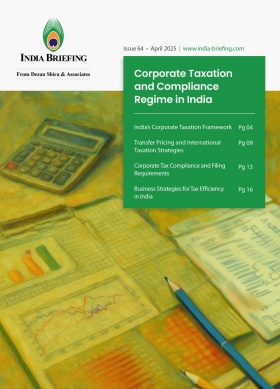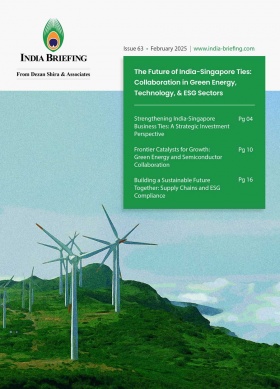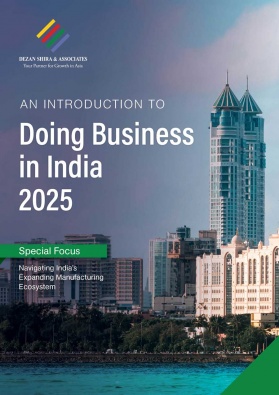Quick Commerce Turns to Profit as India’s E-Retail Sector Matures
India’s quick commerce (Q-commerce) sector is dropping its old game of rapid expansion to focus on monetization, margins, and operational efficiency, as e-retail adoption deepens across cities and small towns.
India’s quick commerce (Q-commerce) sector has entered a new phase. A market report published on July 10, 2025, reveals that after years of aggressive expansion and investor-driven growth, platforms now prioritize improving unit economics and monetizing their existing user base. This shift aligns with the overall growth of India’s e-commerce ecosystem, fueled by a rising middle class, greater digital access, and supportive central government policy reforms.
The Q-commerce segment recorded a gross order value of US$7.4 billion in FY 2024–25, reaching a compound annual growth rate (CAGR) of 142 percent over the past three years. While these figures highlight the rapid adoption of online shopping among Indian consumers, companies are actively reworking their business models to ensure long-term financial sustainability.
Cost control and monetization take center stage
Leading platforms in the Q-commerce sector in India, such as Blinkit, Zepto, Swiggy Instamart, Dunzo Daily, and BigBasket, have now begun prioritizing profit over scale. These companies are actively exploring and monetizing revenue streams such as convenience fees, delivery charges, advertising, subscription models, and private labels, moving beyond a scale-driven approach.
According to the report, fee-based revenue surged from US$52 million in FY 2021–22 to an estimated US$1.2 billion in FY 2024–25. The report projects this figure will grow further to US$4 billion by FY 2027–28, with a compound annual growth rate (CAGR) of 26–27 percent.
The platforms have also diversified their revenue mix. The report highlights that seller commissions now contribute the largest share—between 68 and 74 percent—followed by delivery fees (11–13 percent), advertising (9–11 percent), and emerging income streams like loyalty programs and white-label products. Monetization rates per order have also improved, with platforms earning 14–18 percent per transaction across the board.
In the Q-commerce sector, the monetization rate is the share of each order’s value that the platform can earn as revenue. It includes fees charged to sellers, delivery charges paid by customers, and income from advertising or subscriptions. A higher rate of monetization means the platform is earning more value per transaction.
Growth of E-commerce driven by structural changes
Q-commerce is one segment of India’s larger e-commerce sector, which itself is backed by many long-term changes happening among consumers within the country. For example, India’s internet user base has risen from 700 million in 2021 to over 954 million by 2024. By 2030, India is expected to have between 500 million to 600 million online shoppers and consumer spending of US$4.3 trillion, making it the second-largest online consumer market globally, as per a report by Edelweiss Mutual Funds.
On the supply side, the e-retail sector is projected to contribute over US$170-190 billion to India’s online Gross Merchandise Volume (GMV) by 2030, as per Bain & Company’s findings. The retail market, including offline and online segments, is showing positive momentum despite growth faltering in previous years and is expected to grow by 9 percent in 2025, as per the Retailer’s Association of India.
This growth is happening due to a combination of digital access and rising disposable income. For example, India’s middle class is expected to expand by 100 million households by 2030. This would create a broad base of consumers with rising purchasing power.
GMV is the total value of goods sold on a platform over a specific period. It measures overall sales activity but does not account for discounts or platform earnings.
ALSO READ: Quick Commerce Powers India’s US$13.7B Venture Capital Growth
Government policy and infrastructure support
India’s e-commerce and retail sectors are also benefiting from an accommodating policy environment created by both central and state governments.
The Union Ministry of Commerce and Industry-led Open Network for Digital Commerce (ONDC) helps buyer platforms, seller applications, and logistics providers operate independently but remain interoperable.
The central government has also released a draft document titled ‘E-commerce—Principles and Guidelines for Self-Governance’ in January 2025. This draft requires e-commerce firms to complete Know Your Customer (KYC) checks for all sellers, particularly third-party ones. It makes it compulsory to list products, frame contract terms that are easy to understand, and secure payment processes.
These measures are built upon broader policy steps that were taken in previous years, like the introduction of the Goods and Services Tax (GST) in 2017, and 100 percent foreign direct investment (FDI) through the automatic route in single-brand retail. Together, these developments are creating a more standardized and accessible environment for e-commerce.
These policy measures have made it easier for international and domestic players to operate at scale, due to which 1.5 to 2.5 million MSMEs are now online, forming the base of e-commerce innovation.
Rising dark store operational efficiency
Dark stores—small-format warehouses strategically located near residential areas—continue to serve as the operational backbone of Q-commerce. Their footprint expanded significantly from 1,800 in FY 2023–24 to 3,072 in FY 2024–25. This growth has been both quantitative and qualitative, as evidenced by a 25.1 percent increase in revenue per store, driven by improved inventory management.
The role of dark stores has evolved beyond fulfilling basic grocery and snack orders. They now cater to a broader range of personalized categories, including personal care products, electronic accessories, and ready-to-cook meals.
According to the report, most Q-commerce platforms have started integrating advanced technologies such as AI-powered demand forecasting, automated stock replenishment, and region-specific SKU rationalization. These innovations have led to reduced wastage and enhanced throughput per square foot, reinforcing the efficiency and scalability of the dark store model.
Smaller cities entering the Q-commerce picture
Q-commerce is no longer limited to top metropolitan areas. Tier II and Tier III cities now actively contribute to growing order volumes, propelled by increased smartphone penetration and improved logistics connectivity. A 2025 survey by the Union Ministry of Statistics and Programme Implementation (MoSPI) revealed that over 85.5 percent of Indian households own mobile phones, and more than 270 million people shop online—with non-urban regions driving the fastest growth.
To meet this rising demand, companies are tailoring their delivery and warehousing strategies to suit the population density and consumption patterns of smaller cities. They are building shared fulfillment centers, collaborating with local kirana stores, and adjusting delivery Service Level Agreements (SLAs) to better serve semi-urban markets.
Conclusion
Q-commerce in India is growing out of its old mold of growth that was about increasing delivery speed or market reach alone. These platforms are now focusing on reducing losses per order and improving how they manage inventory and order fulfillment.
As more consumers come online and policy frameworks change, the Q-commerce business model is changing to support long-term profit and viability.
About Us
India Briefing is one of five regional publications under the Asia Briefing brand. It is supported by Dezan Shira & Associates, a pan-Asia, multi-disciplinary professional services firm that assists foreign investors throughout Asia, including through offices in Delhi, Mumbai, and Bengaluru in India. Dezan Shira & Associates also maintains offices or has alliance partners assisting foreign investors in China, Hong Kong SAR, Vietnam, Indonesia, Singapore, Malaysia, Mongolia, Dubai (UAE), Japan, South Korea, Nepal, The Philippines, Sri Lanka, Thailand, Italy, Germany, Bangladesh, Australia, United States, and United Kingdom and Ireland.
For a complimentary subscription to India Briefing’s content products, please click here. For support with establishing a business in India or for assistance in analyzing and entering markets, please contact the firm at india@dezshira.com or visit our website at www.dezshira.com.
- Previous Article India Signs Historic Trade Deal with UK: What It Means for the Two Economies
- Next Article India Becomes Leading Source of Smartphone Shipments to the US in Q2 2025








